Categories
Latest Updates
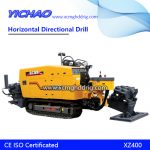
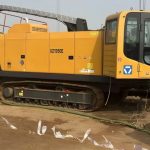
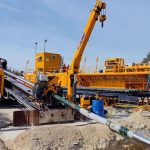
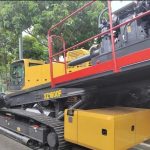
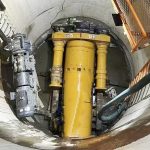
With the rapid development of cities and the continuous expansion of the underground pipeline network, a large number of underground pipelines have been laid for a long time, and now they are facing the problem of reaching or approaching the service life. There are many drawbacks in the traditional excavation repair and pipeline replacement technology, which leads to the high construction cost, and also brings serious disturbance and impact to the residents’ community life in the construction area. The phenomenon of “road zipper” disturbs the urban environment and residents. Life. Based on the serious influence of these various drawbacks, trenchless technology came into being with its advanced technology and obvious advantages.
At present, there are three types of advanced trenchless repair technologies in the world (including more than 10 kinds of process technologies). ; One is to use the method of small pipe passing through large pipe, and set a small drainage pipe inside the original pipe to solve urgent needs, such as short pipe lining, U-shaped pipe dragging and other processes; the last type is the use of spiral pipe making The method uses the winding method to form a new pipeline inside the original pipeline, such as the spiral winding method.
1. Technical principle:
The “U”-shaped HDPE pipe lining repairing the old pipe technology is to use the HDPE pipe whose outer diameter is slightly smaller or equal to the inner diameter of the old pipe, roll the HDPE pipe into a “U” shape through deformation equipment and temporarily bundle it to reduce its diameter, The HDPE is inserted into the old pipe through a tractor, and then opened with water or gas (steam) pressure and a soft ball to open it and restore it to its original diameter, so that the HDPE pipe is swelled and attached to the inner wall of the old pipe to form the anti-corrosion performance of the HDPE pipe. A “tube-in-tube” composite structure combined with the mechanical properties of the original pipeline.
2. Technical features:
(1) Low requirements for cleaning the original pipeline
As long as the cleaned pipeline has a smooth inner wall, no burrs, and no sharp edges and corners, the inner diameter of the original pipeline after cleaning can meet the requirements of interpenetration, which can greatly reduce the pigging investment and time of the old pipeline.
(2) Short construction period
It can pass through elbows of not more than 15°, and the distance of one insertion is long, and for ideal pipe sections, it can be inserted more than one kilometer at a time; the cleaning speed is fast, and the interpenetration repair process has lower requirements for pigging; therefore, the construction period is short.
(3) Construction safety
The “U” type HDPE pipe can reduce the diameter by more than 30%, with low interpenetration resistance, small wear on the outer wall of the HDPE pipe, low construction difficulty and high success rate.
(4) Wide range of applications
It is suitable for the repair of various materials and various conveying medium pipes of Ф75-Ф1600.
1. Technical principle:
The hose lining method, also known as the original curing method (Cured-In-Place-Pipe; CIPP), is to line a layer of liquid thermosetting resin on the inner wall of the existing old pipe, by heating (using hot water, hot steam or UV light, etc.) to cure it to form a thin layer tube that fits closely with the old pipe without loss of pipe section, but with greatly improved flow properties. Pipes repaired using this technology can last up to 30 to 50 years. The soft lining method is suitable for the repair of various pipelines with a diameter of 50-2700mm. There are two methods of placing the soft liner: the flip method and the pull-in method.
(1) Flip-impregnated resin hose lining method
This technology uses a fiber-reinforced hose or braided hose with an impermeable membrane impregnated with a thermosetting resin as the lining material. One end of the hose impregnated with resin is turned over and fixed at the entrance of the pipeline to be repaired with a clamp, and then water or air pressure is used. Turn the resin-impregnated inner layer of the soft liner to the outside and bond to the inner wall of the old tube. Once the soft-lined pipe reaches the end, hot water or steam is injected into the pipe to cure the resin, forming a hard lining with anti-corrosion and anti-seepage function against the inner wall of the old pipe. The flexibility and internal pressure of the resin tube prior to curing allows it to fill cracks, cross gaps, and bypass bends. After the resin has cured, the soft liner is formed into a new pipe that is the same shape as the original pipe, with a slightly smaller inner diameter than the old pipe.
The inversion-impregnated resin lining method was developed by British engineers in the early 1970s for the repair of sewer pipes, and has been used in more than 40 countries and regions in the world in recent years.
(2) CIPP pull-in resin lining process
The resin lining process of CIPP pull-in method is to use a non-woven felt hose with an impermeable film. After the non-woven felt hose is fully impregnated with resin, it is pulled into the pipeline to be repaired from the inspection well, and the soft felt is removed by water pressure or air pressure. The tube is swollen and solidified to form a firm and smooth new tube to achieve the purpose of repair. Judging from the repair of old pipes abroad, due to the strong adaptability and reliable quality of this technology, the use of inspection wells can make the soil unmoved. Wide range of applications. In particular, the use of this technology to repair sewage gravity pipelines has good passability when encountering sinking pipelines. Many lower U-shaped river crossing pipelines of about 100 meters have the possibility of lining repair due to this type of process.
2. Technical features:
(1) To achieve the purpose of restoration with the smallest excavation and floor space
(2) Short construction period: no interface for long-distance lining construction
(3) Wide range of use: pipelines of different materials and different media can be lined and repaired
(4) The lining pipe base material has good toughness and good compatibility with composite resin impregnation. The lining layer isolates the corrosive environment and completely controls the internal corrosion of the pipe.
(5) Conditional repair of the lining of elbows and tension elbows
(6) High pressure bearing capacity: the inner lining layer with a thickness of 5mm, a 12mm hole is opened on the steel pipe wall at the rear end of the inner lining, and the pressure resistance is 3.0Mpa without change.
(7) No grouting is required, and the loss of the overcurrent section is small.
1. Technical principle:
The coating method is an internal extrusion coating technology. The extruder is driven by air as the power source to complete the coating. After multiple extrusion coating, the designed coating thickness can be achieved, so as to realize the anti-corrosion and strengthen the repair of the pipeline. the goal of.
2. Technical features:
(1) The performance of each structural layer of the polymer cement mortar composite lining is superior, and the four-in-one structural layer, that is, the steel pipe, the polymer mortar, the epoxy cement, and the epoxy glass flakes, are firmly bonded to form a whole.
(2) According to the test, the bond strength between polymer cement mortar and steel pipe can reach more than 0.2MPa, between epoxy cement and polymer cement mortar is greater than 1.0MPa, and between new paint and epoxy cement can reach 11.7MPa ; Under the pressure of 80 degrees Celsius and 2MPa, there is no change in oil-resistant sewage immersion for 5,000 hours, and under different pressure tests of 0.4-1.6MPa, there is no leakage for 2 hours.
(3) High bond strength
(4) Good corrosion resistance
(5) Pressure resistance
(6) The pipeline can be repaired up to more than 2km at a time, and it can continuously pass through the elbow and tee of more than 1.5D. The process is simple, the equipment investment is less, and the construction cost can be saved by more than 60% compared with the new pipeline.
1. Technical principle:
The stainless steel sheet lining repair technology is to lining the inside of the pipeline with steel plates. Lining steel plate inside the pipeline can increase the overall compressive resistance of the pipeline, and also has the effect of anti-seepage. Since the stainless steel lining can prevent the corrosion of the inner wall of the pipeline, reduce the roughness of the inner wall of the pipeline, and increase the overflow of water, the lined pipeline is safer, lighter, more economical, and has a longer service life, so as to achieve the purpose of repair. Judging from the restoration of old pipes at home and abroad, this technology has been widely used in sewage pipelines because of its strong adaptability and reliable quality.
2. Technical features:
(1) There is no need to excavate the pavement in a large area to avoid the impact on urban traffic and environment during the construction process.
(2) The stainless steel lining has the advantages of corrosion resistance, high pressure bearing, long service life, smooth surface and no scaling.
(3) There is no secondary pollution to the water quality, no pollution to the environment, and meets the standards of safety, hygiene, health, energy saving and environmental protection.
Technical principle:
The surface-treated pipeline is wrapped with a metal covering layer, and chemical fillers are poured into the gap between the covering layer and the outer wall of the original pipeline to achieve the purpose of external reinforcement and repair.
